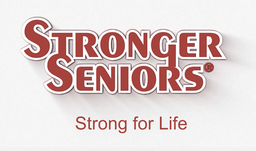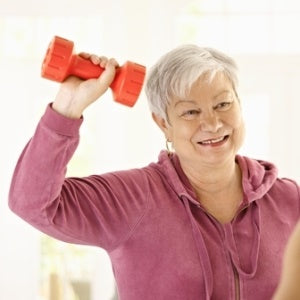Posture awareness, targeted workouts, and strong bones can assist elderly persons avoid severe back rounding.
Kyphosis, or a modest outward bend of your upper spine, is typical. For other people, however, spinal curvature grows considerably with age, resulting in a hunched-over, head-forward posture. This disease, known as hyperkyphosis, is often referred to as a roundback, dowager's hump, or hunchback.Hyperkyphosis can impair your quality of life and function, as well as negatively impact your self-image. It may cause physical symptoms such as decreased movement and lung capacity, as well as increase your chance of falling.
The good news is that age-related hyperkyphosis may improve with treatments such as physical therapy, focused exercises, and postural awareness. If your spine is healthy, you can start protecting your bones, maintaining a flexible, upright posture, and avoiding a hump in your back right now.
Definition of Kyphosis
The lower back (lumbar) spine, the middle (thoracic) spine, and the upper (cervical) spine, which includes the neck, all have slight curvature. These curves work together to support your head and align your center of gravity over your pelvis and hips.
Although these curves are natural, they can grow significantly, disrupting the body's balance, symmetry, and function. Some types of hyperkyphosis are inherited, some appear in childhood or early adulthood, whereas others appear later in life in older persons with normal posture.
According to the American Academy of Orthopedic Surgeons, a normal kyphosis measurement varies from 20 to 45 degrees. Hyperkyphosis is defined as a thoracic curve that exceeds 50 degrees, though precise ranges might vary depending on definition, with usual maximums of 40 or 45 degrees.
As patients stand, doctors can use a full spinal X-ray to determine the degree of curvature. CT scans can provide a more detailed image in some circumstances. For early evaluation and care, patients are typically sent to spinal specialists or spinal clinics.
Lordosis vs. Kyphosis
Lordosis refers to the inward, C-shaped curve of your lumbar spine. This is a natural curve as well, although it can become too extreme. When this happens, the abdomen protrudes and the pelvis curves backward and upward, throwing the body out of alignment.
The cervical spine has a natural inward C-shape as well. The cervical spine becomes straight (known as military neck) or curves in the incorrect way with cervical kyphosis, pulling the head forward and reducing flexibility and stability.
The Influence of a Hunched Back
If you detect your spine rounding, it's critical to seek treatment as soon as possible to prevent further curvature and limit the impact on your health, which can be severe.
People with excessive kyphosis are more likely to experience falls, poor physical function, fractures, and mortality in the future, according to Dr. Deborah Kado, a pioneer in research on age-related hyperkyphosis. Reduced balance and a weaker spine make it difficult to bend or lift, increasing the risk of falls and resulting damage.
According to Kado, a geriatric medicine specialist, professor of medicine at Stanford University, and co-director of the Stanford Longevity Center, the greater the degree of spine curvature, the greater the risk to the individual.
Kado looked examined the relationship between curvature rate and mortality in one study, utilizing data from X-rays on 9,575 women over 65, including roughly 600 who also had thoracic kyphosis assessments. "Women who leaned over were more likely to die in the next eight years," she claims. Although some research participants had vertebral fractures, she emphasizes that this alone did not explain for the increased risk, as only one-third of those who died had such fractures.
According to Kado, several of the women who died in the study with kyphosis died from lung disorders such as chronic obstructive pulmonary disease (COPD), which reduces airflow from the lungs, or pneumonia, which could be attributable to reduced lung capacity from being stooped over.
Kyphosis, Posture, and Age
"Stooped posture is not an unavoidable feature of aging," says Wendy Katzman, an orthopedic clinical expert and emeritus professor of physical therapy and rehabilitation science at the University of California-San Francisco.
"If it's already developed, you can fix it with commitment," adds Katzman, who has undertaken significant research on the impact of exercise on preventing and mitigating the symptoms of kyphosis.
"There's a loss of proprioception in the spine, so a lack of capacity to detect where you are in space," Katzman explains as individuals age. For example, your sense of balance is affected by the vestibular system in the inner ear.
"We tend to lose visual, vestibular, and proprioceptive sensory input after the age of 50," she continues. Losing those vital sources of sensory input to the brain can limit your capacity to feel how upright you are.
Exercise to strengthen supporting muscles and preserve flexibility can help prevent or improve existing hyperkyphosis. Postural awareness, or intentionally standing straighter and avoiding slumped seating throughout the day, is also beneficial.
Variations in Kyphosis
Dr. Jason Lowenstein, chief of scoliosis and spinal deformity surgery at Morristown Medical Center and medical director of scoliosis and spinal deformity surgery at the Atlantic Health System in Morristown, New Jersey, says, "There are really a lot of distinct types of kyphosis." "Some cases are kyphosis, which develops in childhood, and degenerates later in life.
Risk Factors for Kyphosis
Spinal support requires both bone and muscle strength. Osteoporosis and sarcopenia, two prevalent disorders affecting bone and muscle weakness, are the leading causes of age-related kyphosis. Among the risk factors for excessive kyphosis are:
- Osteoporosis- The quality and density of bone deteriorate with osteoporosis, which meaning 'porous bone.' Bones become brittle and fragile, making people more prone to fractures. Because of hormonal changes after menopause, women are more likely to develop osteoporosis.
- Bone loss as we age- Men, too, can develop kyphosis when bone mass naturally falls after attaining peak bone mass in their early thirties and forties.
- Sarcopenia- Sarcopenia, or age-related loss of skeletal muscle mass and strength, can begin as early as your 30s and worsen with age.
- Sedentary behavior- Sedentary lifestyles characterized by prolonged sitting and a lack of physical activity are risk factors for bone-related disorders. Walking promotes balance and good posture while weight-bearing exercise helps preserve strong bones. A physical therapist can assist you in progressively increasing your level of activity.
- A family tree- According to Kado, there appears to be a hereditary link to kyphosis: "If you have a family member who has been impacted by hyperkyphosis, if you notice it in your own family, you might think about your own posture."
- unnecessary weight loss in older persons - Losing weight after the age of 65 may have an impact on general bone health and contribute to the progression of kyphosis, Kado points out.
What Is the Frequency of Hyperkyphosis?
The actual prevalence of excessive kyphosis in older persons is unknown because classifications aren't always uniform and many cases go undetected, however the following data provide context:
It is estimated that 20% to 40% of persons aged 60 and older who live in the community (rather than in a facility such as a nursing home) have hyperkyphosis.
According to a research of healthy women aged 30 to 79 published in the journal Osteoporosis International, women suffer the greatest rise in kyphosis angle during their 50s.
A tiny study of elderly persons in Italy published in the Spine Journal in November 2019 found that kyphosis increased by roughly 9 degrees every decade.



